
The hydrocyclone separator is an effective mineral processing equipment for ore classification. The pulp is sent into the hydrocyclone separator along the tangent direction at a certain speed to rotate. Under the action of centrifugal force, the coarser particles are thrown to the wall of the hydrocyclone separator, moving downward in a spiral trajectory, and are discharged into coarser products from the settling nozzle. The fine particles and most of the water is discharged from the overflow pipe in an internal spiral trajectory, thus achieving the purposes of separation and classification.
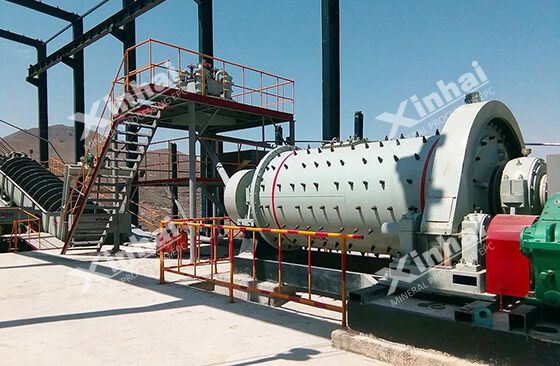
In the production, the factors affecting the working efficiency of the hydrocyclone separator mainly include ore properties, equipment structure, and technological operation. Next, we will explain to you how these various factors affect the working efficiency of the hydrocyclone separator.
The ore properties mentioned here mainly refer to the ore density, composition of particle size and pulp concentration.
The higher the ore density, the finer the grading granularity. When the pulp concentration is large and the mud content is high, its viscosity and density increase correspondingly, which increases the movement resistance of the particles, and makes the grading granularity coarser. Therefore, it is necessary to complete the pre-desliming when the mud content is high. The suitable pulp concentration is usually determined by the mineral processing test according to the specific situation.

In terms of equipment structure, the factors that affect the working efficiency of hydrocyclone separator mainly include diameter and height of the cylinder, size of the feeding port, the diameter of the settling nozzle, diameter and depth of the overflow pipe, and the size of the cone angle.
Diameter and height of the cylinder
The diameter and height of the cylinder have a certain relationship with the size of other parts, and it determines the separation size and production capacity of the hydrocyclone separator. When the ratio among the feed pressure, feeding port, overflow port and the diameter of the hydrocyclone separator remains constant, the production capacity of the hydrocyclone increases with the increasing diameter of the hydrocyclone separator, and the separation size also becomes coarser with the increasing diameter of the hydrocyclone separator.
Therefore, most concentrators generally choose the type of the hydrocyclone according to the required overflow size, or even adopt the cyclone unit.
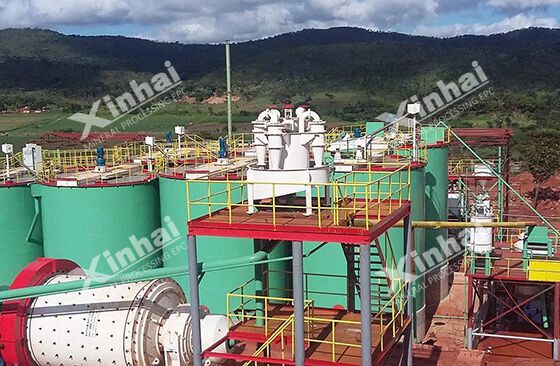
The height of the cylinder mainly affects the time length of centrifugal force that the pulp is affected, thus influencing the working efficiency of the hydrocyclone separator. In general, the height of the cylinder should be 0.6-1.0 times of its diameter. The higher the cylinder height is, the finer the separation size is. However, if it exceeds a certain limit, it will lose its function due to the increasing of the ore feeding pressure.
Size of the feeding port
The size of the feeding port will affect the working efficiency and production capacity of the hydrocyclone separator. Too large or too small feeding port is not conducive to the classification effect of the hydrocyclone separator. If the ore feeding size is coarser and the ore feeding pressure is lower, the ratio between the ore feeding port and the diameter of the hydrocyclone can be slightly larger (generally 0.16-0.20). However, when the ore feeding size is fine and the ore feeding pressure is high, the ratio between the ore feeding port and the diameter of the hydrocyclone is usually maintained at 0.14-0.16.
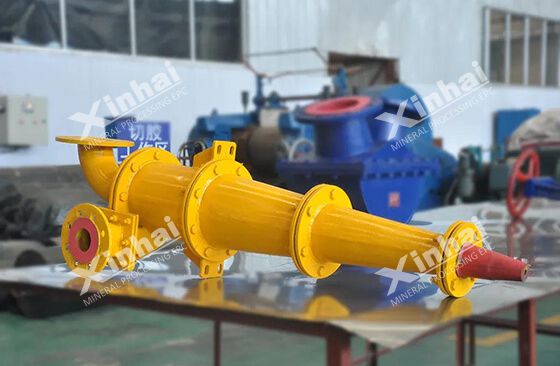
In addition, the shape of the feeding port (usually rectangular) and the feeding method (tangent or involute) also have a certain impact on the work efficiency of the hydrocyclone separator.
Diameter of the settling nozzle
Usually, the diameter of the settling nozzle is large, the overflow flow is small, the overflow size becomes fine, while the settling amount increases, the concentration becomes low and the fine particles increase, but there is no obvious effect on the processing capacity of the hydrocyclone separator.
The diameter of the settling nozzle is small, the concentration of the settling is high, the discharge of the settling is reduced, and there is some coarse size in the overflow. Too small diameter will make the coarse grains accumulate more and more in the top of the cone, causing the blockage phenomenon.

The appropriate diameter of the settling nozzle should make the settling discharge in an umbrella shape, the included angle should be 40°-70°. The diameter ratio of the settling nozzle and the overflow pipe is generally 0.4-0.8.
Diameter and depth of the overflow pipe
The diameter of the overflow pipe should be proportional to the diameter of the hydrocyclone separator. The diameter of the overflow pipe increases, the overflow flow increases correspondingly, the overflow particle size becomes coarser, and the fine particle size in the settling sand decreases, the settling sand concentration increases, and the classification efficiency of the hydrocyclone decreases. In addition, the ratio between the depth of the overflow pipe and the height of the hydrocyclone cylinder should be maintained at 0.7-0.8. Too deep or too shallow depth will make the overflow grain size become coarser, and increase the content of fine grains in the settling sand, thus affecting the working efficiency of the hydrocyclone separator.
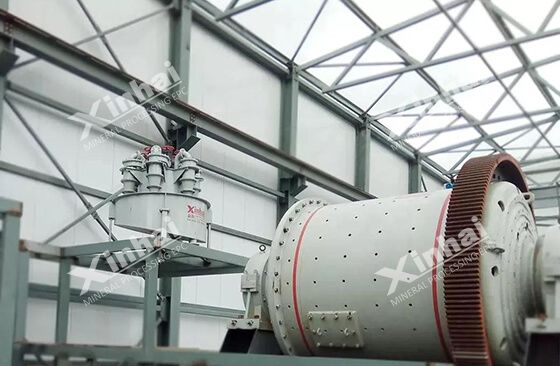
Size of the cone angle
The size of cone angle has an important effect on the working efficiency of hydrocyclone. Small cone angle, long cone (large distance between overflow port and settling port) can increase the classifying volume, and strengthen the classification process of ore particles in the hydrocyclone separator, which is conducive to the separation of fine materials. The cone angle is generally 10°-15° for the desliming of fine grains, and 20°-45° for the classifying of the coarse grain grading.
In the production, the technological operation affecting the working efficiency of the hydrocyclone mainly includes ore feeding, overflow and discharge of settling sand, which requires the hydrocyclone operators to improve their skills in the production process, keep the technological parameters within a reasonable range, thus ensuring the stable operation of hydrocyclone separator.
Ore feed pressure, concentration, size composition
The ore feeding pressure mainly affects the processing capacity of hydrocyclone and classifying size. With the increase of ore feed pressure, the slurry velocity is accelerated, the viscosity effect is reduced, and the classification effect of hydrocyclone is improved. Most concentrators adopt the low pressure (49-98KPa) for the treatment of coarse-grained materials, and the high pressure (98-294KPa) for the treatment of fine and muddy materials.
The feed concentration and size composition will directly affect the concentration and particle size of the final product. The coarser the classifying size is, the more mud or fine particle size in the classifying material is, the higher the feed concentration should be, the higher the slurry viscosity is and the coarser the particle size of the overflow product is.
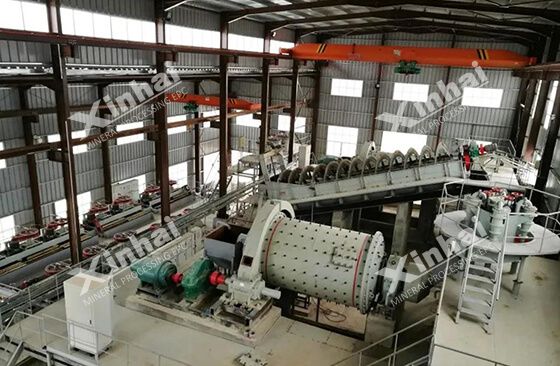
Overflow and the discharge way of settling sand
The ideal working state of the hydrocyclone is that the settling sand is ejected in umbrella shape. Therefore, the angle of the umbrella should not be too large, so that it is appropriate to just spread out. When used for the concentration operation, the settling sand is discharged in a rope shape with a higher concentration. When used for dehydration operation, the settling sand is discharged in a larger umbrella shape with the least solid content in the overflow.
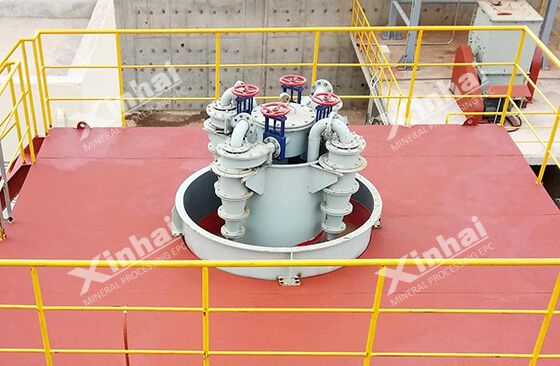
These are the three factors that affect the working efficiency of the hydrocyclone separator. It is worth noting that maintaining the working efficiency of the hydrocyclone is a systematic project, and all factors are interrelated with each other. Each concentrator must take all things into consideration for obtaining the ideal working efficiency of the hydrocyclone separator.
To find out more about our products and solutions, please fill out the form below and one of our experts will get back to you shortly.